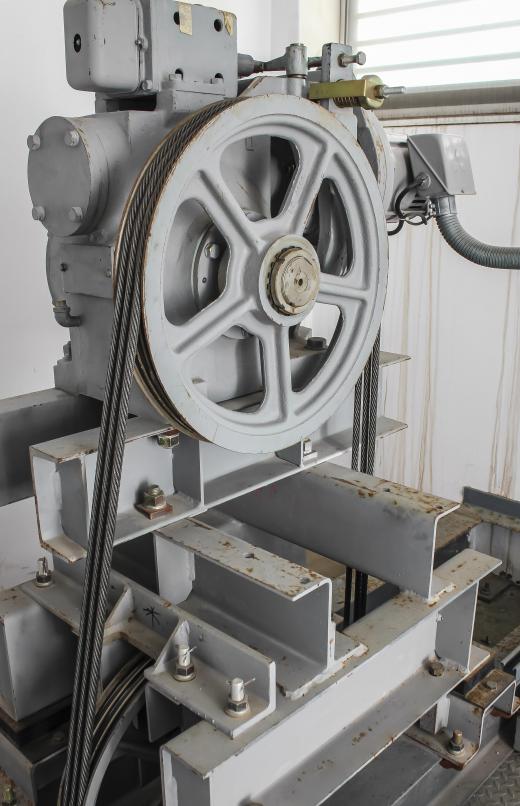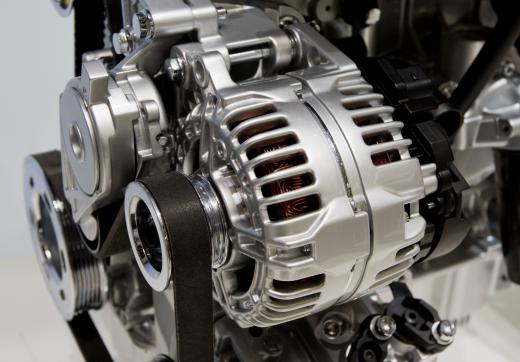A driven pulley is a pulley connected to a belt that moves in reaction to a driving pulley powered by a motor or some other energy source. It is a reactive component within a pulley system and is not capable of driving the system on its own. Many types of engines use driven pulleys to accomplish a variety of functions like controlling other components of a system. They can also be used for activities like rigging block and tackle devices for shifting heavy items.
In a simple two-pulley array, the driving pulley is attached to a source of power like a motor. As the motor runs, it spins the pulley, and the pulley rotates an attached belt. The belt leads to the driven pulley, which will rotated along with the belt. The speed of rotation depends on the diameters of the pulleys and their positions relative to each other. It can be possible to adjust these factors, as in a car engine where it is necessary to change gears for different types of conditions.

The driven pulley can, in turn, rotate something else it is attached to, transmitting the power from the driving pulley to another location. The amount of power transmitted can vary, and the operator may adjust it to suit the need. A heavy equipment operator can increase the engine speed for more power, or change the gearing to increase or decrease speed. These adjustments may also be made automatically with an on-board computer.

Like other moving parts, a driven pulley is subject to wear. If the belt is not placed property or starts to fray, it can damage the driven pulley and may cause it to fail. Misaligned parts within the system can also grind on each other to cause pitting, cracking, and eventual part failure. It is important to regularly inspect systems with moving parts for signs of wear and to replace parts as they break down. If a damaged part is left in place, it could cause a catastrophic incident.
One example of a driven pulley system can be seen in the continuous variable transmission systems used in some vehicles. The driving pulley can alter its diameter to change the gearing and move the driven pulley at different speeds. This type of transmission allows a vehicle operator to change gears without the need for a clutch. They can be easier to drive and tend to have a less steep learning curve than a manual transmission might.
Ever since she began contributing to the site several years ago, Mary has embraced the exciting challenge of being a About Mechanics researcher and writer. Mary has a liberal arts degree from Goddard College and spends her free time reading, cooking, and exploring the great outdoors.

